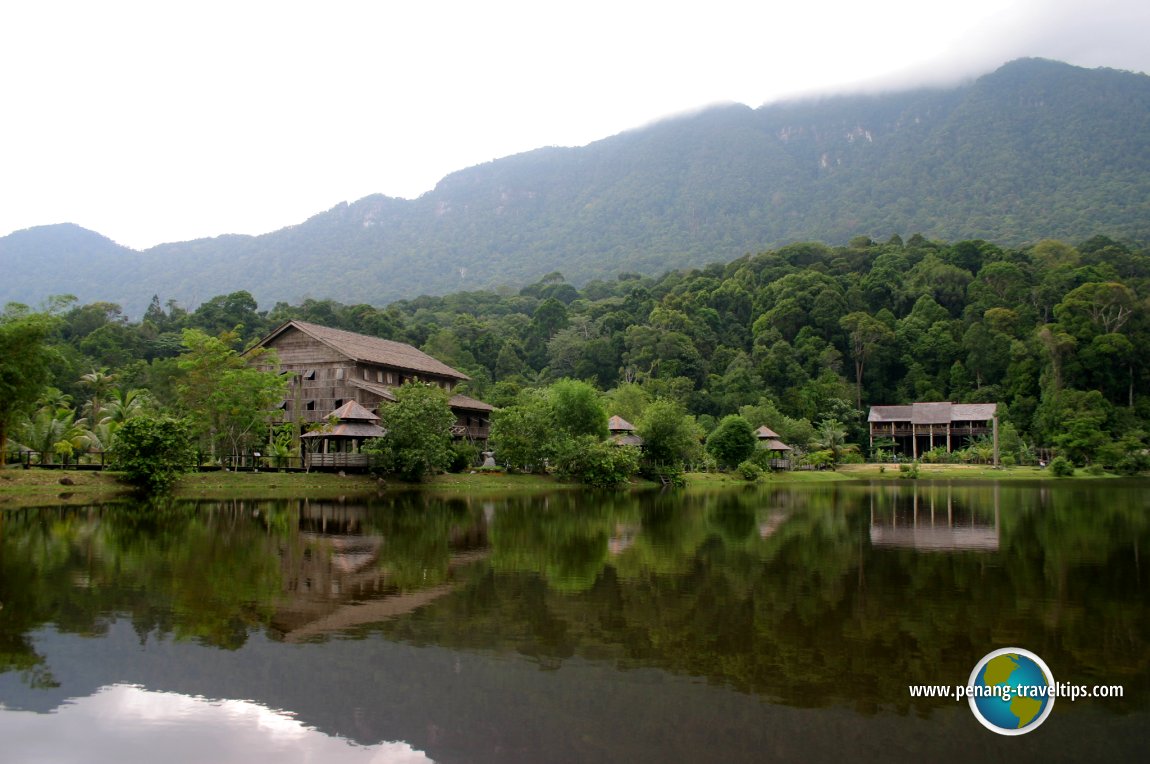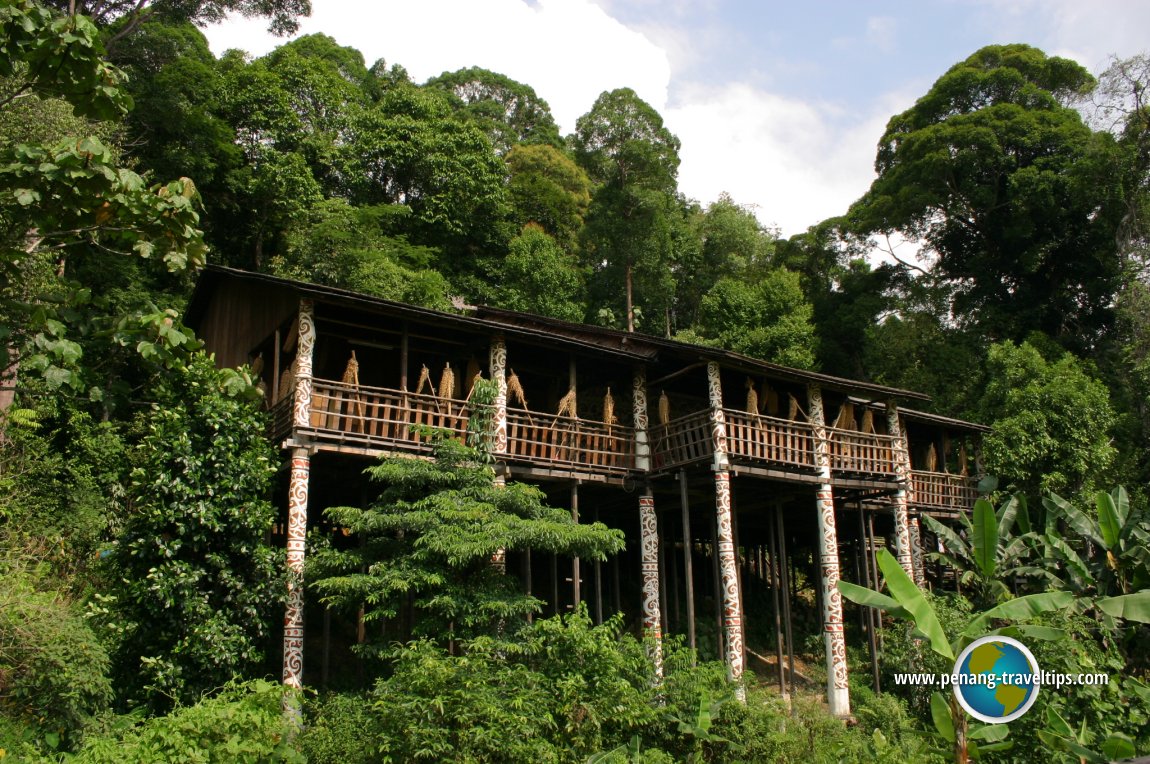 The Orang Ulu Longhouse at the Sarawak Cultural Village (2 October, 2004)
The Orang Ulu Longhouse at the Sarawak Cultural Village (2 October, 2004)
The Orang Ulu Longhouse (GPS: 1.75029, 110.31827) at the Sarawak Cultural Village provides visitors a glimpse into the life of the Orang Ulu of Sarawak. The Orang Ulu, whose name means "upriver people", is a tribe consisting a few groups of people, including the Kenyah, Kayan, Kelabit, Lun Bawang and Penan. They constitute 5.3% of Sarawak's population. Formerly animists, most Orang Ulu are today Christians.
Among the Orang Ulu, the Kenyah and Kayan live in the middle and upper reaches of the main rivers in Central and Eastern Sarawak. They originate from the Kalimantan side of Borneo. Traditionally hill padi farmers, Kenyah and Kayan have now turned to cash crops. The Kelabit live in the remote mountains of upper Baram, while the Lun Bawang the interiors of Miri and Limbang divisions. These two groups of Orang Ulu cultivate irrigated padi. The Penan, the most primitive group of Orang Ulu, continues a nomadic lifestyle.
The Kayan, Kenyah, Kelabit and Iban practise tattooing as a form of body ornamentation. In the old days, a tattoo on the back of a man's hand signify he has taken a skull. The Kayan believe that the tattoo serves as torch for their journey into the underworld. While the Orang Ulu men wear tattoo on almost all parts of their bodies, Orang Ulu women confine it to their wrists and hands.
Although beads are not locally produced, the Orang Ulu have a tradition for beadwork. The Orang Ulu obtain the beads through barter trade. Large, antique beads are fashioned into head-dresses, bracelets, necklaces and girdles, while smaller ones are used on baskets, baby carriers, belts, just about anything they fancy.
An important contribution of the Orang Ulu to Sarawak culture is woodcarving. Skilled carvers embellish Orang Ulu houses, boats, tools and musical instruments with their elegant designs. The most important Orang Ulu motif is called "dragon dog", a figure with long snout, curling fangs and bulging eyes. Many woodcarving designs have found their way into tattoos, and these designs have also been received enthusiastically in the West.
Orang Ulu longhouses are built to last. Built from solid ironwood, these houses may last for generations. Unlike many other tribes, the Orang Ulu practise settled agriculture. They maintain developed rice fields, doing away with having to find new fresh fields every now and then.
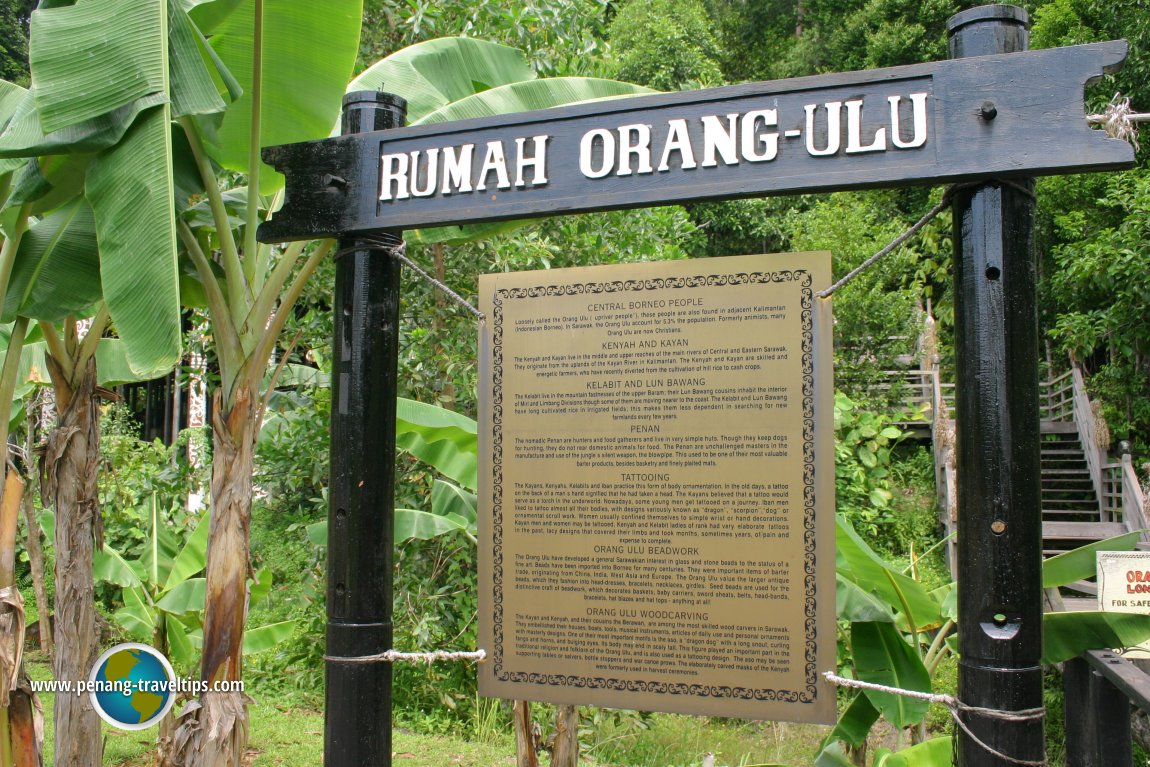 Orang Ulu interpretive plaque at the Sarawak Cultural Village (2 October, 2004)
Orang Ulu interpretive plaque at the Sarawak Cultural Village (2 October, 2004)
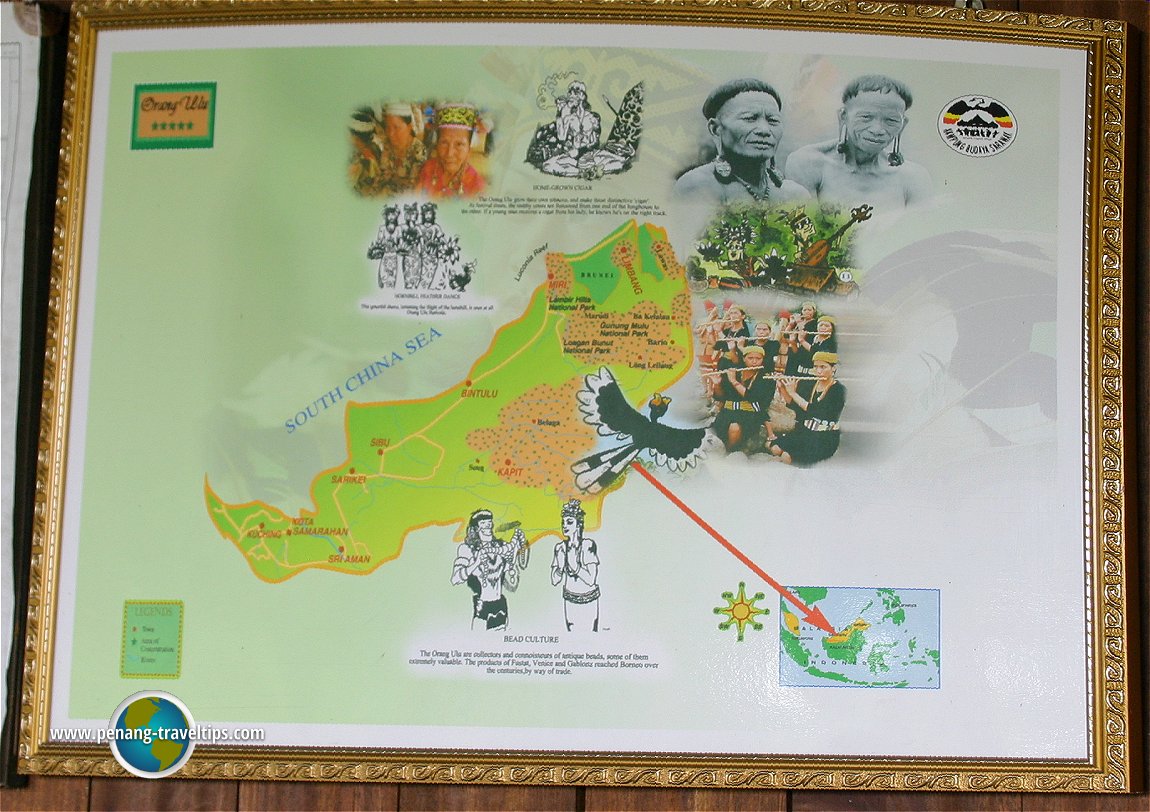 Traditional distribution of Orang Ulu in Sarawak (2 October, 2004)
Traditional distribution of Orang Ulu in Sarawak (2 October, 2004)
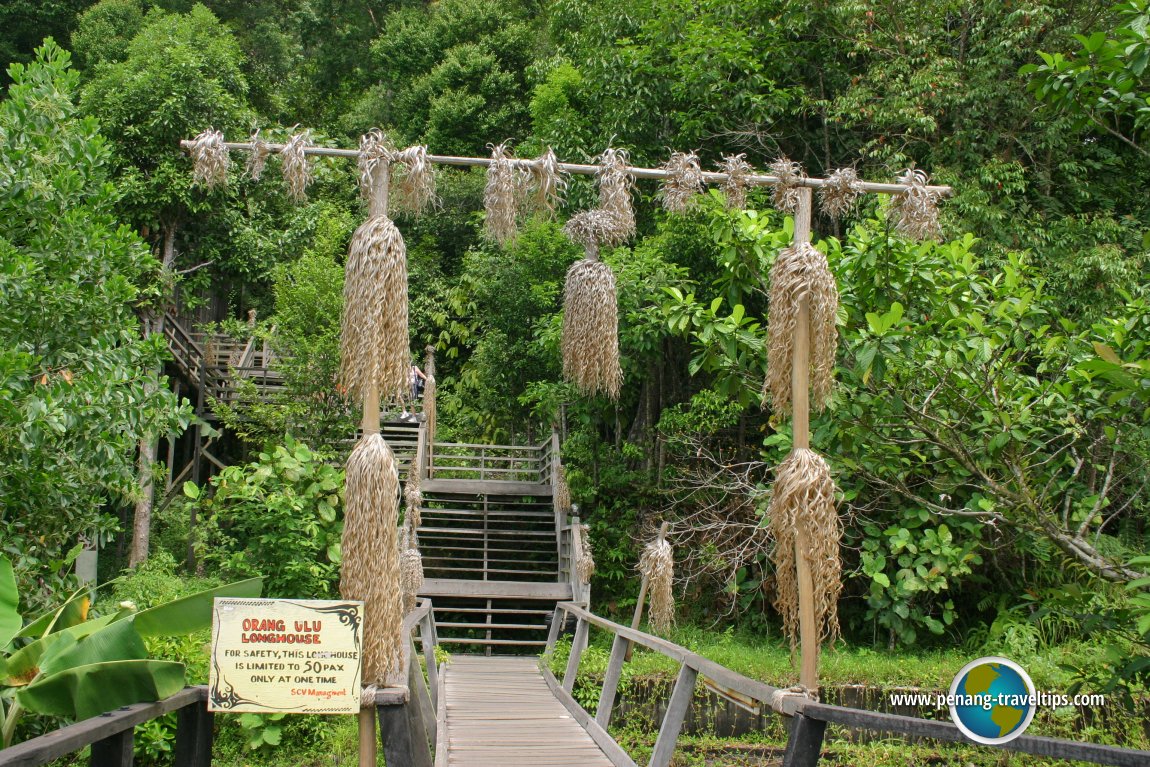 Entrance to the Orang Ulu longhouse (2 October, 2004)
Entrance to the Orang Ulu longhouse (2 October, 2004)
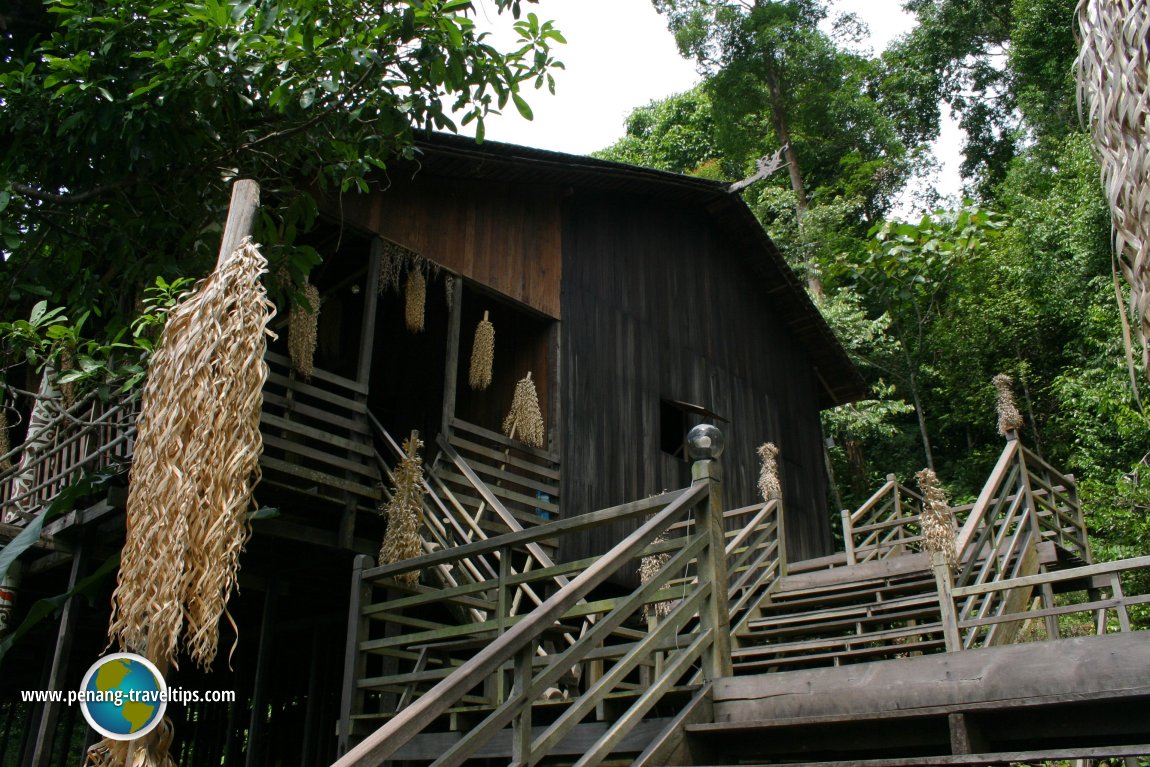 Approaching the Orang Ulu longhouse (2 October, 2004)
Approaching the Orang Ulu longhouse (2 October, 2004)
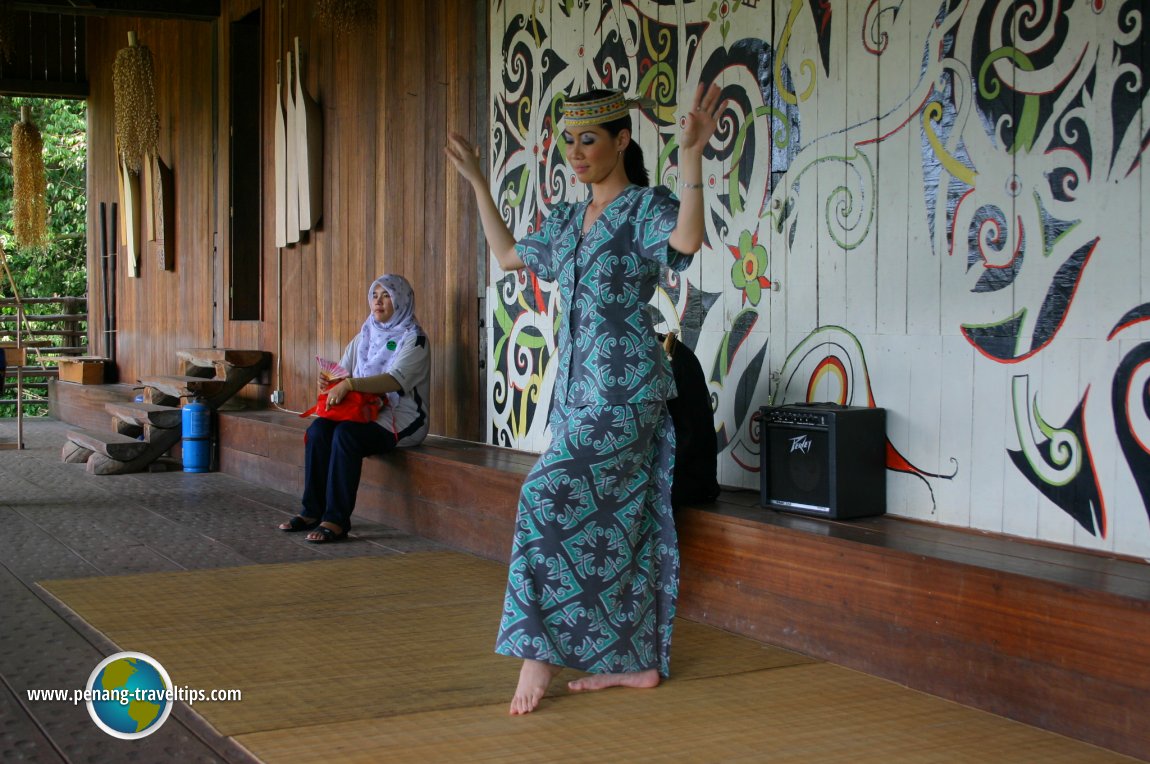 Orang Ulu dance performance (2 October, 2004)
Orang Ulu dance performance (2 October, 2004)
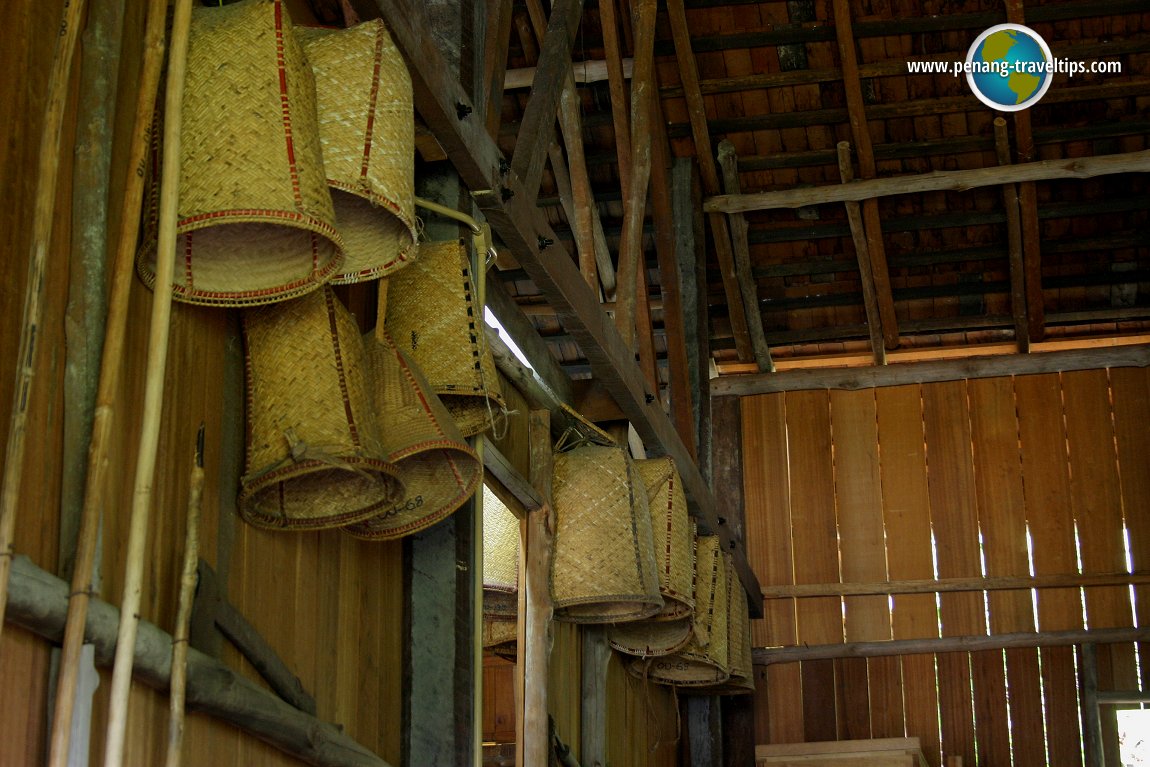 Basketware inside Orang Ulu longhouse (2 October, 2004)
Basketware inside Orang Ulu longhouse (2 October, 2004)
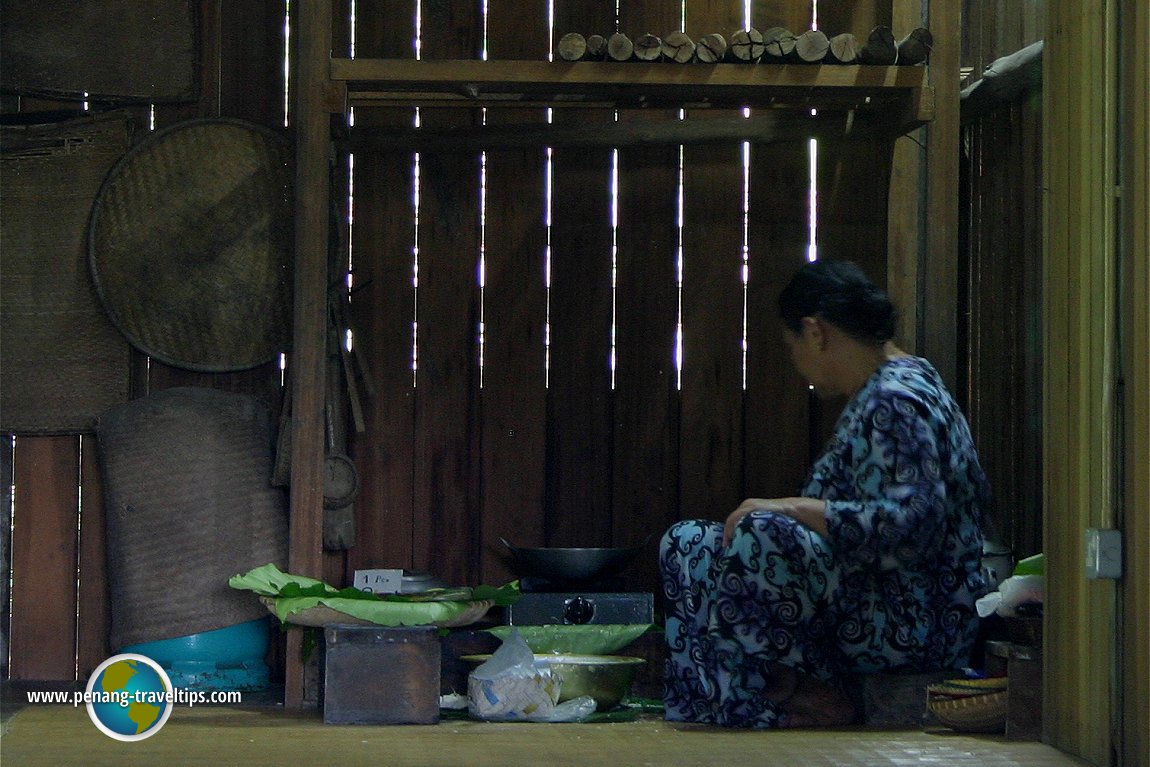 Orang Ulu lady making kuih in the kitchen of the longhouse (2 October, 2004)
Orang Ulu lady making kuih in the kitchen of the longhouse (2 October, 2004)
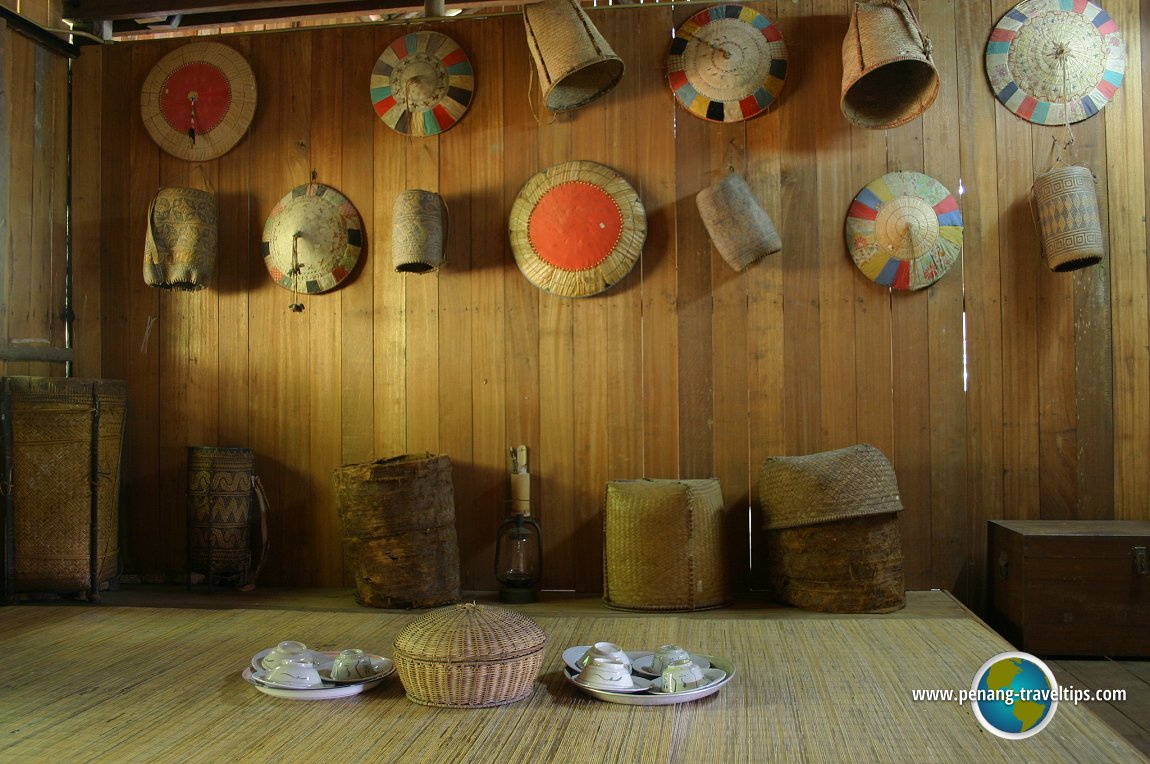 Dining room in the Orang Ulu longhouse (2 October, 2004)
Dining room in the Orang Ulu longhouse (2 October, 2004)
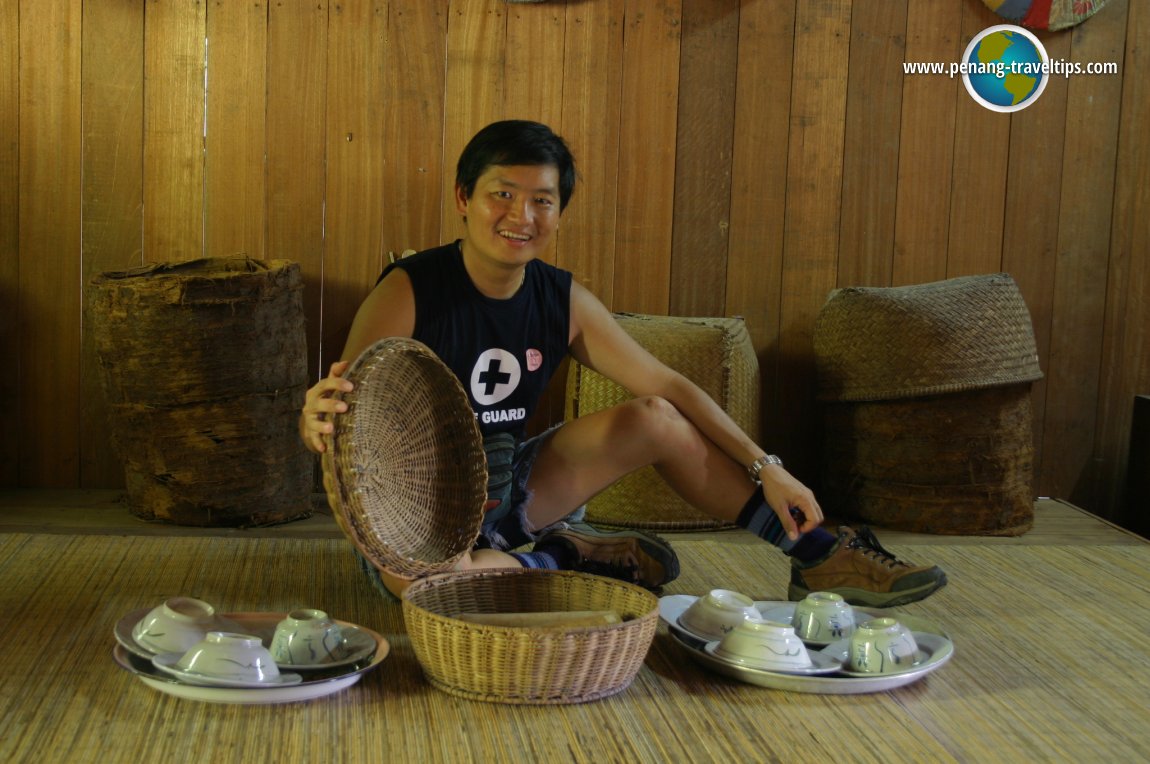 Here I am in the dining room in the Orang Ulu longhouse (2 October, 2004)
Here I am in the dining room in the Orang Ulu longhouse (2 October, 2004)
Return to Sarawak Cultural Village main page
DetailsBack to Discover Kuching mainpage
 Latest updates on Penang Travel Tips
Latest updates on Penang Travel Tips

Copyright © 2003-2025 Timothy Tye. All Rights Reserved.

 Go Back
Go Back